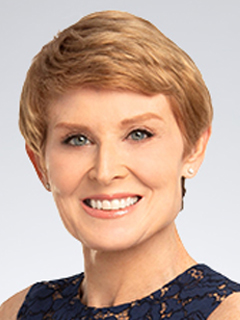Labor market stalled in July
The labor market has slowed; no doubt about it.

August 1, 2025
Payroll employment rose by 73,000 in July, slightly less than market expectations, following sharp downward revisions of 258,000 for May and June. Government employment fell 10,000, with a drop of 12,000 federal payrolls only marginally offset by a small gain of 2,000 hires at the state and local levels.
The federal workforce has contracted by 81,000 since its peak in January, mostly due to retirements amidst a hiring freeze. Buyouts and administrative leaves are expected to lapse as we move into the new fiscal year, October 1. The Atlanta Fed has estimated that the spillover effects from losses in federal employment, most of which is outside of the Beltway, could top 1.2 million.
Private sector payrolls rose by 83,000 in July, which is above the negligible 3,000 in June and 69,000 in May but we are getting close to stall speed. Gains were dominated by a 73,000 jump in healthcare and social assistance jobs and not much else. Retail added 16,000 jobs while finance and insurance (mostly insurance) added 14,200. The gains in retail were concentrated in warehouse club supercenters, reflecting more cautious spending by consumers.
Leisure and hospitality added 5,000 jobs, which is essentially unchanged; that is no longer a driver of gains. That reflects a slowdown in domestic travel and tourism, notably at the lower end of the income strata. The ranks of those out on vacation in any given month, which hit new records in recent years, have more than normalized.
Losses showed up in professional and business services, manufacturing, wholesale trade and mining. Construction added only 2,000 jobs, mostly in heavy and civil engineering and nonresidential. Both commercial and residential construction activity contracted in the second quarter. The only major outliers are data centers and the build-out for AI modeling, which remain on a tear.
The three legs that supported employment – state and local governments, healthcare and social assistance and leisure and hospitality – are down to two. That is a precarious situation and leaves little margin for error.
Average hourly earnings rose 0.3%, following a 0.2% increase in the previous month. That translates to a 3.9% gain from a year ago, up slightly from the 3.8% we saw in June. The gains were concentrated in the service sector.
Retail trade was up a whopping 1.2% for the month, the largest monthly increase since July 2020. That was when we were emerging from the pandemic. Several states have boosted minimum wages, starting in July, which likely buoyed those gains. The timing of those increases in July amplified the rise due to seasonal adjustment. Brace for a correction in August.
Separately, the information sector has seen wages accelerate, despite layoffs in tech. That reflects the war on AI talent.
Weekly hours worked rose a tick to 34.3 hours per week in July from 34.2 in June, which boosted weekly earnings. The challenge is that we saw a smaller number of new paychecks, which will further crimp consumer spending as we move into the back-to-school season.
The only silver lining is that we do not need as many jobs per month to keep the unemployment rate low. Payrolls rose an average of 85,000 per month since the beginning of the year, nearly half the 168,000 we saw in 2024. The gains were enough to hold unemployment at 4.2% for much of the year, which is historically low and close to the Federal Reserve’s estimate of full employment.
The household survey revealed that the unemployment rate returned to 4.2% in July, after dipping to 4.1% in June. The ranks of the unemployed rose by 221,000 after falling by close to the same amount in June. The supply of workers continued to contract with the civilian labor force falling by 38,000.
The data on immigration is not seasonally adjusted and not completely comparable to the overall figures. However, we have lost nearly 1.5 million foreign-born workers since April. That is the largest decline since the height of the pandemic in 2020 and is holding down the supply of workers along with the unemployment rate.
Labor force participation dropped to 63.2%, making three months of declines. A surge in the ranks of retiring baby boomers and a loss in foreign-born workers are adding to the loss in participation. We have also seen a blow to women with young children since the start of the year. The crisis in childcare has intensified since 2024.
Those forced to accept part-time instead of full-time for economic reasons jumped 219,000, while the ranks of the long-term unemployed rose by 179,000. The ranks of the long-term unemployed are at the highest level since the pandemic. The length of time unemployed also rose. The U6 or stress measure of unemployment, which includes discouraged and marginalized workers, jumped to 7.9%, the highest level since March.
The chance of a September rate cut just soared but is still not a slam dunk, given the tariffs that are in the pipeline.

Diane Swonk
KPMG Chief Economist
Bottom Line
Today’s data affirm Fed governors Christopher Waller’s and Michelle Bowman’s dissent at the July FOMC meeting. The challenge for the Fed is to cut after it is sure that inflation will be tamed by the weakness in the labor market. That is still a hard call given the uneven rollout of tariffs and those that are still in the pipeline. The effective tariff rate could easily double to 18% by year-end. The chance of a September rate cut just soared but is not a slam dunk due to the threat of stagflation that we now face. That occurs when inflation and unemployment rise in tandem.
Subscribe to insights from KPMG Economics
KPMG Economics distributes a wide selection of insight and analysis to help businesses make informed decisions.
Explore more

Public sector accounts for half of payroll gains
Private sector payrolls rose by a tepid 73,000.

KPMG Economics
A source for unbiased economic intelligence to help improve strategic decision-making.

Insights from the Emerald Isle: On tour with economists abroad
Other economies are strengthening trade ties between them, leaving the US behind.
Meet our team
